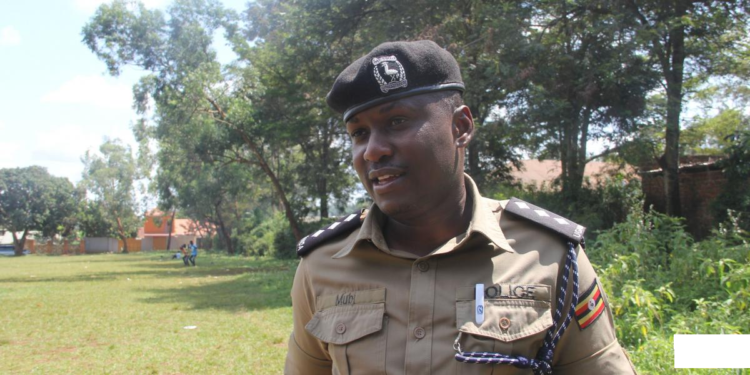In a bid to enhance national security, the Kiira Regional Police Command is set to enforce the presidential directive of the proposed sub-county policing model before the end of January 2025.
This move is in line with President Yoweri Museveni’s directive in 2020 to the then Inspector General of Police (IGP) Okoth Martins Ochola (OMO) to roll out the sub-county policing model across the country.
The directive was issued at a time when the country was experiencing widespread insecurity, particularly in the central region, where armed gangs with rifles and machetes were terrorizing citizens.
Some security personnel, including police, military, and private guards, were among the victims.
The sub-county policing model aims to bring policing services closer to the people, enhancing harmony between the police and the public, and facilitating timely responses to incidents.
The model envisages deploying 18 personnel, three motorcycles, and communication gadgets, including Counter Phones and walkie-talkies, to each sub-county.
According to the Kiira Regional Police Commander, SSP Charles Nsaba, the region will receive manpower starting this week for deployment to various sub-counties, including Mpumudde, Butagaya, Buyala, Mutai, Busedde, Buyengo, and Kisima One Islands.
The Kiira Regional Police publicist, SP James Mubi, has assured residents that thorough inspections and threat assessments have been conducted in all sub-counties.
Residents and leaders have welcomed the move, expressing optimism that it will reduce crime and consolidate public trust.
With the rollout of the sub-county policing model, residents can expect to see personnel carrier trucks in Jinja City and its environs. SP James Mubi has urged residents to remain calm and welcome the police personnel.
The implementation of the sub-county policing model in Kiira Region coincides with President Museveni’s tour of the Busoga sub-region, where he will assess the Parish Development Model (PDM)performance in 11 districts.
Security of citizens and their property is paramount in a developing country like Uganda, especially with the influx of foreign and local investments.
The government’s efforts to attract investors, led by President Museveni, underscore the importance of creating a secure environment for businesses to thrive.
A secure environment not only protects citizens and their property but also fosters economic growth, stability, and trust among investors.
In Uganda’s case, the NRM government has implemented various measures to ensure security, including community policing initiatives.
Foreign and local investors who are in their thousands in the country need assurance that their investments are secure and protected from theft, vandalism, or other forms of crime.
Citizens need to feel safe in their daily lives, free from fear of crime or violence.
Critical infrastructure, such as roads, bridges, factories, and industries and utilities, requires protection from damage or destruction.
Benefits of Enhanced Security:
A secure environment attracts more investments, creating jobs and stimulating economic growth.
When citizens feel safe, they are more likely to trust the government and institutions, leading to greater social cohesion.
Effective security measures can lead to a decrease in crime rates, creating a safer and more stable society.
According to experts, security is a critical component of Uganda’s development strategy, particularly as the country seeks to attract more investments and promote economic growth.
By prioritizing security, the government can create a stable and attractive environment for businesses, citizens, and investors alike.
Origins of Community Policing:
The concept of community policing has its roots in the 19th century, but it gained momentum in the 1960s and 1970s in the United States.
Early influencers include Sir Robert Peel (1788-1850), the founder of the London Metropolitan Police Service, and emphasized the importance of community engagement and partnerships in policing.
Another notable figure is August Vollmer (1876-1955), a US police chief and criminologist who advocated for community-oriented policing and introduced innovations like police cars and radios.
Modern Community Policing:
The modern concept of community policing emerged in the 1960s and 1970s in the US, driven by the President’s Commission on Law Enforcement and Administration of Justice (1965).
This commission’s report highlighted the need for community-oriented policing.
The Kansas City Preventive Patrol Experiment (1972-1973), the study that demonstrated the effectiveness of community policing in reducing crime.
Lee P. Brown: Brown, a US police chief and scholar, is often credited with coining the term “community policing” in the 1980s.
The other notable influencer is James Q, a US criminologist, who wrote extensively on community policing and its benefits.
The concept of community policing has since evolved and been adopted by law enforcement agencies worldwide, with various adaptations and innovations.
The sub-county policing model being implemented in Uganda is a unique approach, but other countries have similar models that aim to bring policing services closer to the community.
Community-Oriented Policing (COP) in the United States: This approach focuses on building trust between law enforcement and the community through collaborative problem-solving and proactive policing.
Cities like Chicago and Los Angeles have implemented COP models, which have shown promise in reducing crime and improving community relationships.
Neighbourhood Policing in the United Kingdom: The UK’s neighbourhood policing model emphasizes local, visible, and accountable policing.
Officers are assigned to specific neighborhoods, allowing them to build relationships with residents and respond to local concerns. This approach has been implemented in various UK cities, including London and Manchester.
Local Policing Teams in Australia: In Australia, local policing teams are responsible for providing policing services to specific geographic areas.
These teams work closely with the community to identify and address local crime issues. The Australian model has been successful in reducing crime and improving community satisfaction with policing services.
Sub-Divisional Policing in India: India’s sub-divisional policing model involves dividing police stations into smaller, more manageable areas.
This approach allows for more focused policing and better community engagement.
While not identical to Uganda’s sub-county policing model, India’s approach shares similarities.
These models demonstrate that community-focused policing approaches can be effective in improving public safety and trust in law enforcement.
However, the success of such models depends on various factors, including adequate resources, effective leadership, and strong community engagement.
Do you have a story in your community or an opinion to share with us: Email us at editorial@watchdoguganda.com














